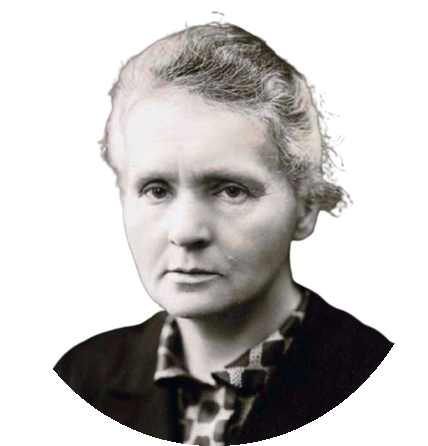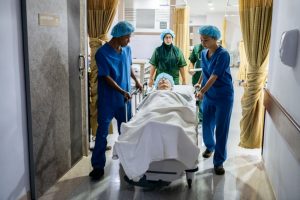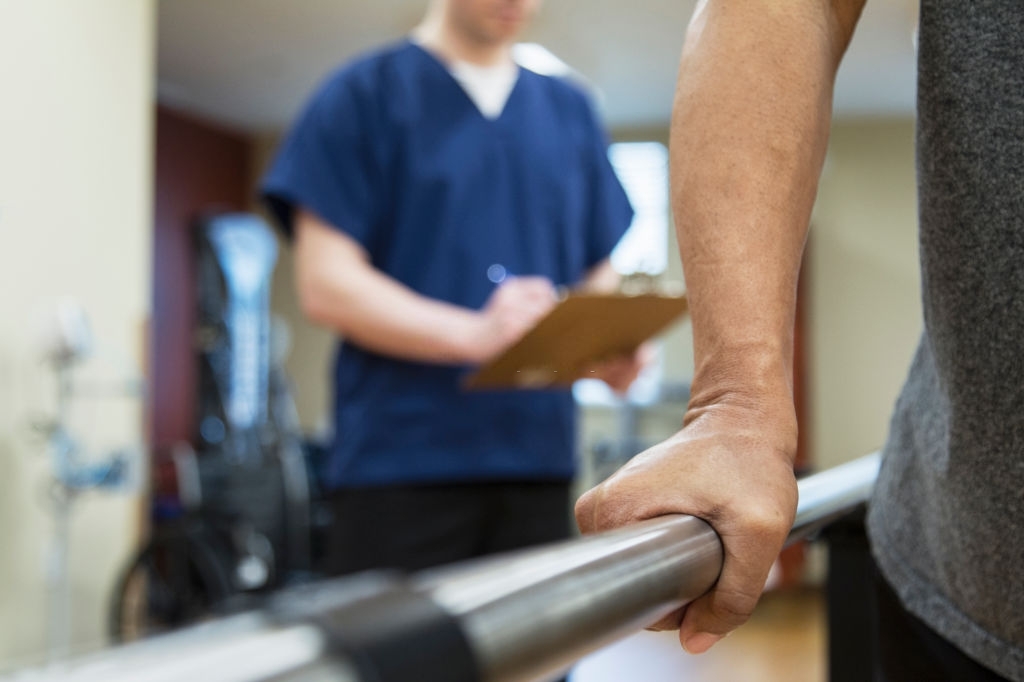Tips to saving water while brushing teeth
AIMST University’s Deputy Vice-Chancellor (Student Affairs) and the Dean of Faculty of Dentistry, Associate Professor Dr. Ramesh Kumaresan has listed eight simple tips to save water while brushing our teeth. While referring to data by the National Water Services Commission, he had stated that Malaysians consume more water than recommended by the World Health Organisation (WHO). Dr. Ramesh’s write-up on ‘Tips to saving water while brushing teeth’ was published in NST’s Letters to the Editor column on 30th March 2021. Click https://www.nst.com.my/opinion/letters/2021/03/678015/tips-saving-water-while-brushing-teeth to read.
Help to quit smoking
Associate Professor Dr. Hasnah Hashim from the Dental Public Health Department, Faculty of Dentistry of AIMST University has highlighted the role of dentists to identify smokers and help encourage them to stop the habit.
According to her, patients may be receptive to cessation advice if their health concerns can be related to smoking. Furthermore, she has also contributed her opinion on tobacco cessation efforts using the 5As approach.
The article, titled ‘Help to quit smoking’ was featured in the STARHEALTH section of The Star on 21st March 2021. 
Why Mastery of Mathematics is Important
Mr. Raman Raguraman, the Deputy Dean of the Faculty of Engineering and Computer Technology (FECT), AIMST University has articulated the importance of mathematical skills and knowledge. He has also offered recommendations to revive the interest among children to learn mathematics at high school level. His short write-up on ‘Why mastery of mathematics is important’ was featured in NST’s Letters to the Editor column on 19th March 2021. Click here to read.
RERO Robotics

Learning of New Skills Vital to Remain Relevant Throughout One’s Career
According to the Labour Force Malaysia Report, the number of unemployed has increased from 764,400 in November 2020 to 772,900 in December 2020. Although the COVID-19 National Immunisation Programme is in full force together with other initiatives to propel the job market, Malaysia's labour market will remain challenging this year.
In light of these issues, Mr. P.K. Karuna, the Director of the Centre for Lifelong Learning (CLL), AIMST University has emphasised on sustainable and inclusive lifelong learning model which are required to tackle unemployment. He had outlined five suggestions for the government, policymakers, businesses, and individuals on how lifelong learning can tackle unemployment in Malaysia.
The opinion piece by the CLL Director, titled ‘Learning of new skills vital to remain relevant throughout one’s career’ appeared in the columnist section of the News Straits Times (NST) on 13th March 2021.
Click Learning of new skills vital to remain relevant throughout one's career to read.

Phase out migrant labour, accelerate tech investments to boost productivity
In a 2020 survey, the World Economic Forum found that more than 80 percent of global firms planned to digitalise their processes, while 50 percent wanted to quickly automate their production. In line with this finding, the government and companies have to emulate new developments so that the country’s workforce will stay relevant and continue contributing to the battered economy. Professor Datuk Dr. John Antony Xavier, the Vice-Chancellor & Chief Executive of AIMST University has suggested three initiatives that would complement the government's efforts to accelerate productivity improvements during the COVID-19 era and beyond. The article titled ‘Phase out migrant labour, accelerate tech investments to boost productivity’ was published in the columnist section of the News Straits Times (NST) on 8th March. Click here to read.
COVID-19 vaccination
Since Malaysia started its National COVID-19 Immunisation Programme in February 2021, many issues and concerns are surrounding the immunisation programme. In light of this, the Malay Mail has published an article on ‘COVID-19 vaccination: Could opt-out model speed up sign-up rates in Malaysia? Health experts raise ethical concerns, prefer voluntary opt-in’. The article which was published on 6th March 2021, features several health experts which include AIMST University’s associate professor and public health specialist, Dr. Sarawasthi Bina Rai. The comprehensive article answers many questions with regards to the COVID-19 vaccination programme and offered suggestions on ways to improve services by the government with regards to the pandemic. Click here to read
Step up to hit 80% target
Professor M. Ravichandran, Dean of the Faculty of Applied Sciences (FAS) and Chairman of COVID-19 Task Force of AIMST University has contributed thoughts on the initiation of the National COVID-19 Immunisation Programme (NIP). The write-up which also calls the public to do their part towards the success of NIP is titled “Step up to hit 80% target” was published in the ‘Letters to Editor’ column of The Star on 5th March 2021. Click here to read.
4 Amazing Women Who Have Changed the World
Emmeline Pankhurst: 1858-1928

Marie Curie: 1867 - 1934

Oprah Winfrey: 1954 - present day

Malala Yousafzai: 1997 - present day

Click here to read more about the Amazing women who have changed the world.
Page source: https://www.bbc.co.uk/newsround/42872803
Why You Should Choose To Do MBBS Locally
When deciding the best course to study in Malaysia, you should consider the current job demand and salary. There is already an oversupply of general practitioners in Malaysia, but there is an increasing need for specialized physicians. If you choose to do your MBBS locally, it will take 9 to 10 years to become a professionally registered physician in Malaysia and an additional 3 to 6 years to become a specialist. Before entering a Medical Program or MBBS (Bachelor in Medicine, Bachelor in Surgery) in Malaysia, after SPM or O-Levels, students can choose the right Pre-University Programme for themselves. STPM and Matriculation are inexpensive options, but at public universities or IPTA, the seats are limited and extremely competitive to enter a medical degree.
Private medical universities and colleges
Private universities and colleges are the other options for students. If you're not going overseas for your medical degree, you could consider the Foundation of Science at a private university offering an MBBS course in Malaysia. The duration of the Foundation in Science is one year and cheaper than external pre-university programmes. The A-Levels are a common external pre-university programme for admission into the MBBS. The A-Levels are 18 months long and will train students to withstand the rigours of Malaysia's medical curriculum. For the Pre-University program and medical degree, the entrance requirements are higher, so students need to verify if they qualify for entry.
Housemanship
Students need to select a university with a medical program approved and accredited by the Malaysian Medical Council (MMC) and Malaysian Qualifications Agency (MQA) following completion of the Pre-University Programme. A 5-year MBBS programme accepted by the Malaysian Medical Council is required to apply for the medical qualifying examination. If you are qualified to practice as a doctor, this test will help you determine your core knowledge and gauge. After completing two years of housemanship and one year of government service, passing this exam will allow you to practise medicine in Malaysia. Housemanship is essentially the first two years after graduation in the lives of doctors. In Malaysia, interns will gain an average of RM3500 to RM4,400 a month as a houseman. A houseman will then be promoted to the rank of Medical Officer after completing two years of housemanship. New housemen in Malaysia are placed in the bracket of UD43/UD44. They will advance to the UD 48 bracket after serving three years as a medical officer. Following another four years of service, Medical Officers will then be promoted to UD47/UD48 and UD52 after three more years. Furthermore, as a Medical Officer, one may switch to private practice, which translates to a higher pay grade. Depending on the specific medical field you choose, you can continue to specialize after serving a year as a Medical Officer, which can take you 3 to 6 years. To be a licensed medical specialist in Malaysia, 4 to 5 years of postgraduate study is required, plus 2 to 4 years of supervised training as a specialist. Some of the areas you can choose to specialise in include:- Cardiology (heart)
- Pulmonology (lungs)
- General surgery
- Neurology (brain)
- Dermatology (skin)
- Orthopaedics
- Gynaecology

Final Thoughts
Although there are many general practitioners in Malaysia, you should have no worries about a future in the lucrative field of medicine if you intend to become a specialist. Malaysia as a major medical tourism hub in the world is one of the best places to study medicine and secure a good, high paying job in the medical field.Which Industry to Pursue an Internship After Doing Electrical & Electronic Engineering?
Among your favourite electrical products, including the screen you're reading with right now, there's an engineering team brainstorming the next latest and greatest electrical product across different industries. Depending on the area you choose to follow, you might be designing and building various electrical and electronic products in several different industries. After getting a Diploma in electrical and electronic engineering in Malaysia, you will learn skills that range from technological, interpersonal, and problem-solving in an electrical engineering internship. Internship programs in electrical engineering will promote mastery of applying physics and math to construct energy and electromagnetism solutions.
How to get an electrical engineering internship?
An internship in electrical engineering is an exciting opportunity. Because you'd be exposed to different businesses, electrical engineering internships will provide you with many useful opportunities, offering a taste of what you'll experience down the road in your career. Opportunities include connecting with potential mentors, learn electrical and electronic engineering trade secrets, and establish relationships with colleagues with a variety of knowledge. You need to apply to a company to work as an intern. However, the first thing you need to do is find out if they accept interns.
Industries to Pursue an Internship After Studying Electrical and Electronic Engineering
After getting a Diploma in electrical & electronic engineering in Malaysia, several industries are available to you for an internship with a degree in electrical and electronic engineering, from aerospace engineering to telecommunications. Here are some of the industries you can pursue an internship:- Aerospace industry
- Automotive industry
- Construction industry
- Defense industry
- Electronics industry
- Fast-moving consumer goods industry
- Marine industry
- Materials and metals industry
- Oil and gas industry
- Pharmaceuticals industry
- Power generation industry
- Rail industry
- Utility industry
- Telecommunications industry
1. Aerospace Industry
An intern in the aerospace industry will be focused on cutting-edge technology, integrating or upgrading power-dense electrical devices and autonomous systems. There will also be a growing emphasis on emerging technologies for hybrid/electric propulsion for aerospace platforms.2. Automotive Industry
Electrical engineering interns in the automotive industry are expected to work on a range of components, such as engine and power units, interior and exterior lighting, air conditioning, protection systems, seating controls (movement, heating, and cooling), start/stop technology, and braking systems. You will also learn about the creation of autonomous, connected, and electrified (ACE) vehicles.3. Building Industry
Electrical engineering interns in the building environment sector will work on projects in hospitals, offices, and shopping malls to airports, universities, railway stations, etc. Certain responsibilities for designing various systems, including electrical power, emergency power, communications, fire alarms, protection, CCTV, and lighting, maybe entrusted to you. As interns develop professionally, they'll also take on responsibility for other technical disciplines to create coordinated designs that fulfil client requirements.4. Defense Industry
Electrical engineering interns in the defence industry are involved in electrical power and network engineering or optimizing hardware and software design principles, designing advanced design methods, and evaluating complex products to ensure the equipment is suitable for the air, sea, or land operating environments. Activities may include equipment design, assessment of equipment behaviour, fault detection, assessment of emerging technology, simulation and modelling, and data analysis.5. Electronics Industry
An intern in the electronics industry may be assigned duties in design, layout, manufacturing, packaging, testing, and field applications engineering. They may also work with chips, integrated circuits, capacitors and resistors, and devices that use electricity as part of their power source.6. Marine Industry
Interns in the marine industry typically either operate and maintain vessels and equipment or design and construct them. Interns may play a role in producing and transmitting electricity. There are power demands from huge cruise ships, from the ballroom to the boiler room, while the new offshore vessels have sophisticated electric propulsion systems.
7. Oil and Gas Industry
Interns in the oil and gas industry may be involved in the design, construction, evaluation, maintenance, and upgrading of electrical systems and components, including generators, transformers, and electric motors, making sure that they meet the right level of protection, reliability, and efficiency and can withstand severe conditions such as depth, temperature, and pressure. This may include making minor modifications or large-scale equipment adjustments.Final Thoughts
The nature of your job, as an intern, in various industries (including those not listed above) depends on the industry you work in. Many employers take on interns intending to expand their knowledge further. In addition, expect to work alongside engineers from other disciplines in these industries. Your job will be focused on providing electrical and electronic engineering services.What Do Physiotherapists Do in Hospitals?
Physiotherapy is a science-based discipline that takes a 'whole person' approach to health and wellness, encompassing the patient's general lifestyle. It is a degree-based program that you must learn in school by studying physiotherapy-related courses in Malaysia.
In Malaysia, students become trained physiotherapists after completing their programme and awarded a Bachelor of Physiotherapy degree. As a trained physiotherapist, you can work in different environments, including hospitals, community health centres, private clinics, sports clubs, rehabilitation centres, schools, and fitness centres.
Physiotherapists who work in the hospital help people recover from injuries suffered from surgery, sickness, ageing, or impairment. They direct patients to strengthen their body and movement to avoid any complications in the future.
Physiotherapists also seek to diagnose the causes of injuries and put together a recovery plan, including exercises, manual therapy, and electrotherapy (using electrical energy as a medical treatment. They also advise on treating long-term conditions.
Physiotherapists treat a wide variety of individuals, including infants, sportspeople, and the elderly. Some patients will need support to recover from accidents or surgery, and others will have long-term illnesses.
 Here are some of the conditions a physiotherapist will treat in the hospital.
Here are some of the conditions a physiotherapist will treat in the hospital.
| Musculoskeletal physiotherapy | They treat conditions such as strains, sprains, back pain, and posture problems. |
| Cardiorespiratory physiotherapy | They help to prevent or relieve the symptoms of conditions like asthma, chronic bronchitis, and other cardio-respiratory disorders. |
| Neurological physiotherapy | They target conditions affecting the nervous system, including Parkinson's, strokes, and brain injuries. |
| Geriatric physiotherapy | They concentrate on the diverse movement needs of older adults. |
| Paediatric physiotherapy | They rehabilitate children after illnesses or accidents. |
| Sports physiotherapy | They work to relieve discomfort and reintroduce freedom of movement following sports injuries. |
| Women's Health | They focus on addressing the female reproductive system, breastfeeding, prenatal and postnatal treatment. |
Duties of a physiotherapist in the Hospital
The typical responsibilities of a physiotherapist in the hospital include:- Acting with patients with a variety of disabilities, often over weeks or months
- Diagnosing, evaluating, and handling conditions
- Encouraging fitness and movement
- Advising patients on living a safe lifestyle
- Keeping tabs on patients and their progress
- Liaising with other healthcare practitioners to promote a holistic approach to treatment
- Staying up to date with advances in therapies
- Being loving, gentle, and patient

Qualifications to Become a Physiotherapist in Malaysia
There are three major routes to choose from to qualify as a physiotherapist:- Bachelor’s degree: You can study for a Bachelor of Physiotherapy at a university in Malaysia.
- Master’s degree: if you have an undergraduate degree in a specific area (such as health sciences), you can study for an MSc in Physiotherapy.
- Degree apprenticeship: you can study for a BSc in Physiotherapy while being employed in a registered clinic.

